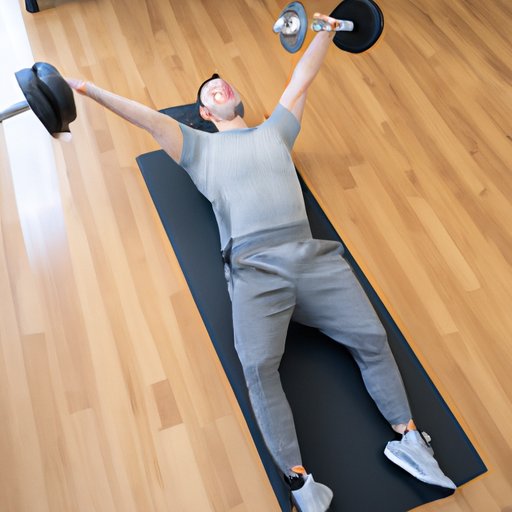
How To Do Lateral Raises: A Beginner’s Guide
Lateral raises are an excellent exercise for strengthening and toning the shoulders and upper back muscles. They’re perfect for anyone looking to improve shoulder mobility, posture, and overall fitness. If you’re new to lateral raises, this article will guide you step by step on the right form and technique, common mistakes to avoid, lateral raise variations, and how to incorporate them into a full-body workout routine.
Muscle Groups Engaged During a Lateral Raise and Proper Form and Technique
Before we get to the exercises, let’s talk about the muscles worked during a lateral raise, including the deltoids and upper back muscles. Performing a lateral raise correctly is essential to target these muscles effectively.
To execute a lateral raise, stand with your feet shoulder-width apart and hold a pair of dumbbells by your side with your palms facing your thighs. Raise your arms straight out to your side, keeping your elbows straight. Keep your arms parallel to the ground, and then slowly lower your arms back to your sides. Perform 2-3 sets of 15-20 reps, depending on your fitness level.
The most important thing to remember when performing a lateral raise is to avoid using momentum to lift the weights, as this will not target the right muscles properly. Instead, use your shoulder muscles to lift the weights.
Common Mistakes and Tips to Avoid Them
As with any exercise, common mistakes are bound to happen. Here are some tips and tricks to avoid them while performing lateral raises:
- Avoid lifting too much weight as this can lead to poor form and injury. Start with lighter weights and gradually increase as you progress.
- Avoid over-rotating your arms, which can lead to shoulder injury.
- Slow down the movement to avoid using momentum to lift the weights.
- Keep your arms parallel to the ground to target the right muscle groups.
Lateral Raise Variations
While the traditional dumbbell lateral raise is the most popular variation, there are many more ways to add variety and challenge to your workouts. Here are some of the variations:
- Cable lateral raise: Instead of using dumbbells, use cables while performing the lateral raise to target your lower deltoids.
- Resistance band lateral raise: Similar to the cable lateral raise, a resistance band lateral raise will focus on the lower deltoids.
- Alternating lateral raise: Alternate lifting the weights if you prefer the less intense variation.
- Wide grip lateral raise: Increase the distance between your hands for a wider grip.
Step-by-step Guide for Beginners
If you’re new to lateral raises, it’s best to start slow and gradually increase weight and intensity. Here’s a step-by-step guide for beginners:
- Start with a pair of light dumbbells, such as a 2-5lb dumbbell.
- Stand straight with your feet shoulder-width apart.
- Hold the dumbbells with your palms facing your thighs.
- Slowly lift both arms out to the side with your wrists remaining straight.
- Keep your elbows slightly bent and raise your arms until they are parallel to the ground.
- Hold for a second and then release slowly.
- Repeat 2-3 sets of 10-15 repetitions.
Incorporating Lateral Raises into a Full-Body Workout Routine
Lateral raises can be incorporated into a full-body workout routine to enhance overall fitness and improve shoulder stability and posture. Try combining lateral raises with other exercises that complement each other, such as:
- Overhead press
- Reverse flies
- Dumbbell curl and press
Benefits of Lateral Raises
Lateral raises offer many health benefits, including:
- Improved shoulder mobility
- Increased stability and strength in the shoulders
- Strengthened upper back muscles
- Improved overall posture
Inspirational Stories of Success
Many individuals have achieved their fitness goals by regularly doing lateral raises. Here are some real-life success stories:
- Lisa C. managed to regain her strength after a shoulder injury by performing lateral raises regularly.
- Michael B. incorporated lateral raises into his workout routine and improved his shoulder mobility and posture.
- Jane T. lost weight and toned her muscles by including lateral raises in her daily workout routine.
Conclusion
Lateral raises offer many benefits for shoulder mobility, strength, and overall fitness. Whether you’re a beginner or an experienced lifter, there are many ways to add variety to your workouts and target different muscle groups by performing lateral raises. Incorporating lateral raises into your full-body workout routine can lead to enhanced fitness levels, better posture, and improved shoulder stability.
If you have any questions or feedback on this article, please share them in the comments section below.




